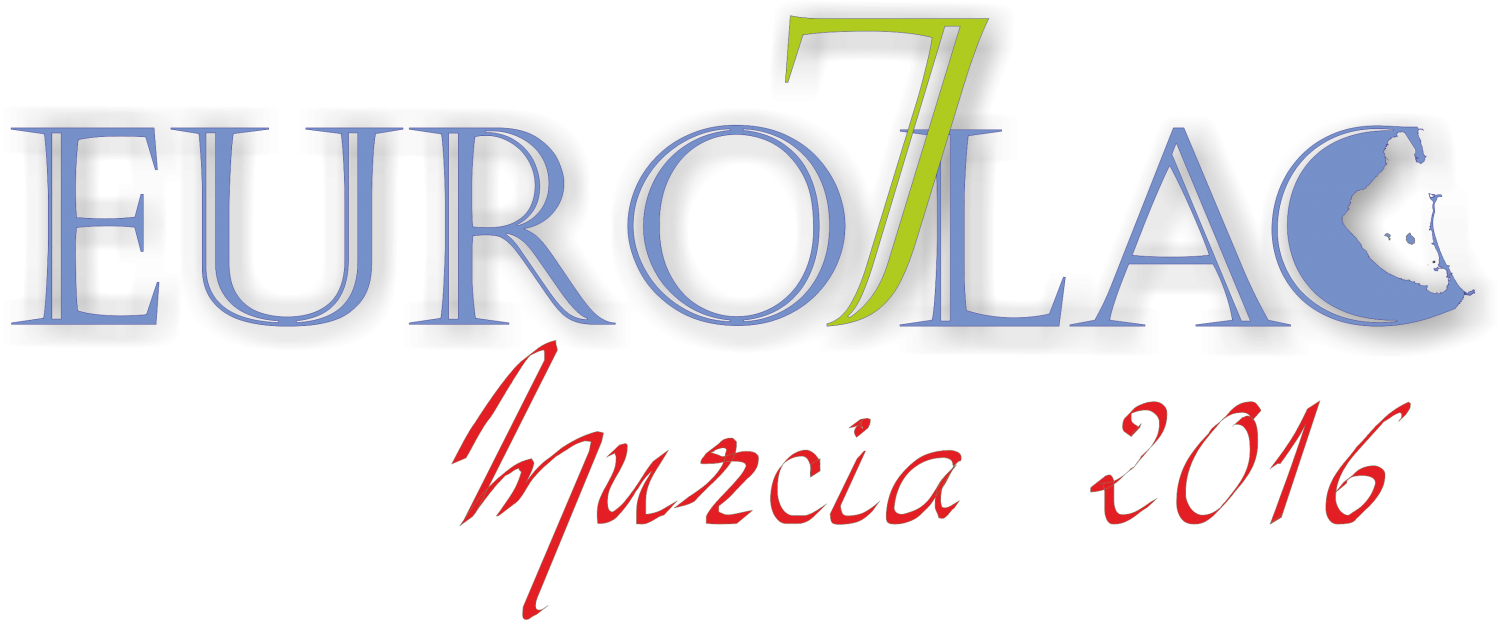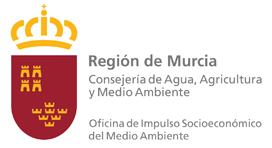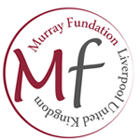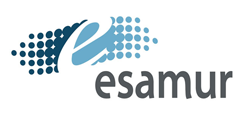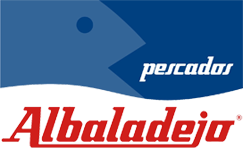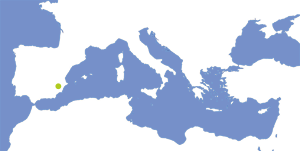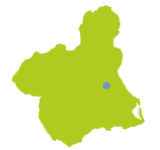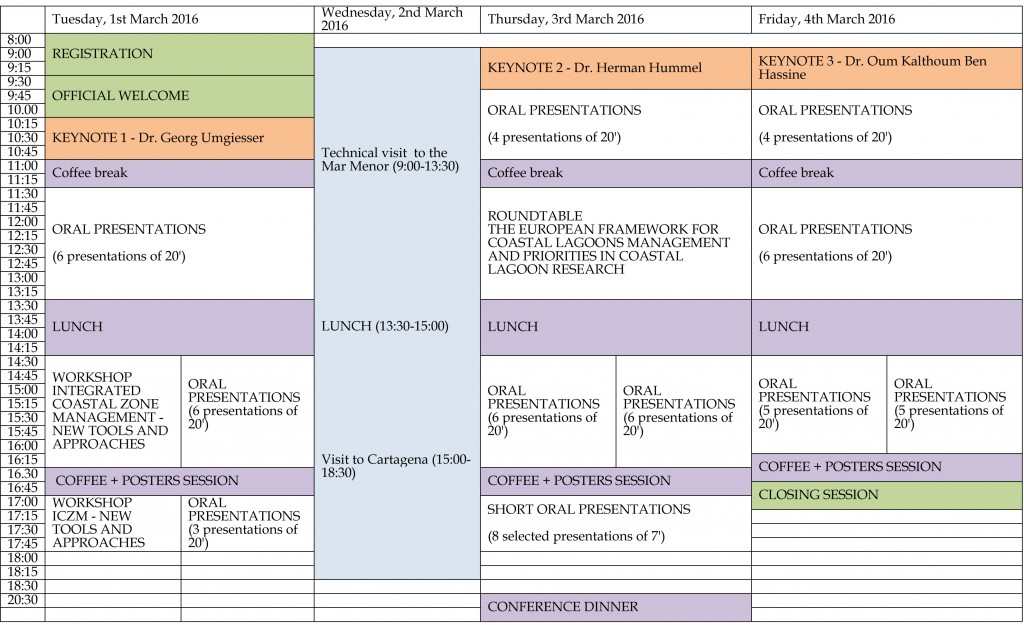SYMPOSIUM SCHEDULE
Tuesday, 1st
8:00-9:30 REGISTRATION / Auditorium and Congress Centre “Victor Villegas”
9:30-10:15 OFFICIAL WELCOME / ROOM 1
10:15-11:00 KEYNOTE PRESENTATION / ROOM 1
The role of numerical modeling in coastal zone management. Dr. Georg Umgiesser, Institute of Marine Sciences in Venice (National Research Council of Italy), Open Access Center for Marine Research (Klaipeda University, Lithuania).
11:00-11:30 COFFEE BREAK
11:30-13:30 ORAL PRESENTATIONS / ROOM 1
Chairman: Dr. Alberto Basset, Department of Biological and Environmental Sciences and Technologies, University of Salento, Lecce, Italy
11:30 – Dynamic response of lagoon ecosystems to extreme events (flooding, storms, salinity variations): the case of study of a flooding in a Gargano lagoon (Italy). Raffaele D’Adamo, Antonietta Specchiulli, Angela Santucci, Tommaso Scirocco, Sergio Pelosi, Maddalena Maselli, Lucrezia Cilenti & Adele Fabbrocini.
11:50 – First use of multidimensional functional diversity indices for phytoplankton in coastal lagoons. Amandine Leruste, Sebastien Villéger, Nathalie Malet, Rutger de Wit & Béatrice Bec.
12:10 – The neglected role of seabirds in trophic processes of coastal ponds. Salvatrice Vizzini, Geraldina Signa & Antonio Mazzola.
12:30 – Fish migrations between the Curonian lagoon and the coastal Baltic Sea: assessment using stable isotopes and ECOPATH model. Rasa Morkūne & Artūras Razinkovas-Baziukas.
12:50 – The far-field effect of tidal wetlands upon Adriatic Sea hydrodynamics. Christian Ferrarin & Georg Umgiesser.
13:10 – Wood and Woodborers in Lagoons and estuaries. Davide Tagliapietra, Marco Sigovini, Irene Guarneri, Erica Keppel, Annamaria Guastadisegni, Angelika Brandt, Anna Shroeder & Lorenzo Zane.
13:30-14:30 LUNCH
14:30-16:30 ORAL PRESENTATIONS / ROOM 1
Chairman: Chairman: Dr. Piotr Margonski, National Marine Fisheries Research Institute, Gdynia, Poland
14:30 – New biogenic habitats in tidal channels and their classification. Marco Sigovini, Davide Tagliapietra, Irene Guarneri, Frine Cardone, Giacomo Montereale Gavazzi, Aleksandra Kruss & Fantina Madricardo.
14:50 – Modeling the dynamics of the sediment oxygen uptake during wind wave re-suspension events in the Mar Menor lagoon. Elena Sánchez-Badorrey & F. Javier García-Anguita.
15:10 – Macroalgae growth limitation and biomass assessment in the Berre Lagoon (SE France). Species succession over the last 15 years. Emma Gouze, Guillaume Bernard, Vincent Lhéritier, Patrick Raimbault, Patrick Bonhomme & Rossi Nadège.
15:30 – Trajectories of macrophytes during ecological restoration of French Mediterranean coastal lagoons. Ines Le Fur, Vincent Ouisse, Monique Simier, Nathalie Malet, Jocelyne Oheix, Valérie Derolez, Martin Plus & Rutger de Wit.
15:50 – Ecological significance of cross-community scaling relationships in Mediterranean lagoons. Vojsava Gjoni, Ilaria Rosati, Francesco Cozzoli & Alberto Basset.
16:10 – Potential distribution of Zostera noltei in Mediterranean French lagoons. Vincent Ouisse, Carole Perron, Annie Fiandrino, Jocelyne Oheix, Anais Giraud & Sébastien Rochette.
14:30-16:30 WORKSHOP ON INTEGRATED COASTAL ZONE MANAGEMENT – NEW TOOLS AND APPROACHES / ROOM 2
Coordination: Drs. Holger Janßen & Josianne G. Støttrup, Leibniz Institute for Baltic Sea Research, Rostock, Germany, and National Institute of Aquatic Resources, Technical University of Denmark
– A retrospective analysis of best practice Integrated Costal Management cases around the Baltic Sea. Holger Janßen, Raimonds Ernsteins, Josianne Støttrup, Grete E. Dinesen & Ramūnas Povilanskas.
– Evaluating Preferences for Sustainable Coastal Development – A Decision-Support Tool for Stakeholder Involvement. Johanna Schumacher, Gerald Schernewski, Silke Schönwald, Marija Katarzyte, Donalda Karnauskaitè, Malgorzata Bielecka & Grzegorz Różyński.
– Measuring sustainability of coastal areas: the tool and examples. Donalda Karnauskaitè, Gerald Schernewski & Johanna Schumacher.
– The Systems Approach towards sustainable integrated coastal zone management. Josianne G. Støttrup & Grete E. Dinesen.
– Benchmarking of Systems’ Approach in Cross-border Management of the Vistula Lagoon and the Nemunas River Catchment, Kaliningrad Oblast (Russia). Ramūnas Povilanskas & Boris V. Chubarenko.
– A DSS prototype for Integrated Coastal Zone Management: Application to the island of Lesvos, Greece in Eastern Mediterranean. Anna Tsoukala & George Tsirtsis.
16:30-17:00 COFFE BREAK
17:00-18:00 ORAL PRESENTATIONS / ROOM 1
Chairman: Dr. Piero Franzoi, Centre for Estuarine, Coastal and Marine Sciences (CEMAS), Department of Environmental Sciences, Informatics and Statistics, Ca’ Foscari University, Venice, Italy
17:00 – Ichthyofauna of the Marchica lagoon (Mediterranean, Morocco): updated inventory and spatial patterns. Mohamed Selfati, Najib El Ouamari, Abdelhakim Mesfioui, Philippe Lenfant & Hocein Bazairi.
17:20 – The price of beauty: habitat constraints on carotenoid-based colouration in a small euryhaline teleost. Francesco Cavraro, Simone Redolfi Bristol, Matteo Zucchetta, Piero Franzoi & Stefano Malavasi.
17:40 – Life history strategies of fishes across environmental gradients in estuaries. Nils Teichert, Stéphanie Pasquaud, Ainhize Uriarte, Angel Borja, Guillem Chust & Mario Lepage.
17:00-18:00 WORKSHOP ON INTEGRATED COASTAL ZONE MANAGEMENT – NEW TOOLS AND APPROACHES / ROOM 2
Coordination: Drs. Holger Janßen & Josianne G. Støttrup, Leibniz Institute for Baltic Sea Research, Rostock, Germany and National Institute of Aquatic Resources, Technical University of Denmark
– Observations on conflicts between sand extraction and fisheries in Danish coastal waters. Thomas Kirk Sørensen, Grete E. Dinesen & Josianne G. Støttrup.
– Reanalysis of coastal management of Hel Peninsula with elements of systems approach framework. Grzegorz Różyński & Małgorzata Bielecka.
– Site selection and stakeholder acceptance of mussel cultivation plants for water quality improvement in the South Baltic Sea. Nardine Stybel, Mareike Schadach, René Friedland & Sven Dahlke.
Wednesday, 2nd
9:00-18:30 TECHNICAL VISIT TO THE MAR MENOR LAGOON AND SURROUNDINGS
Thursday, 3rd
9:00-9:45 KEYNOTE PRESENTATION / ROOM 1
Coastal lagoons in the framework of the Biodiversity Observation Networks. Dr. Herman Hummel & Dr. Pim van Avesaath, Royal Netherlands Institute for Sea Research (NIOZ).
9:45-11:05 ORAL PRESENTATIONS / ROOM 1
Chairman: Dr. Mario Lepage, Irstea (National Research Institute of Science and Technology for Environment and Agriculture), Cestas, France
9:45 – Restoration ecology for coastal lagoons: need for a highly integrated multidisciplinary approach. Rutger De Wit.
10:05 – Uncertainty in the application of fish-based multi-metric indices in transitional waters. Matteo Zucchetta, Luca Scapin & Piero Franzoi.
10:25 – A performance analysis of the Transitional Water Quality Index to assess eutrophication in transitional waters. Andrea Bonometto, Gianmarco Giordani, Emanuele Ponis, Chiara Facca, Rossella Boscolo Brusà, Adriano Sfriso & Pierluigi Viaroli.
10:45 – Red listing transitional water ecosystem: relationships man and lagoon relationships in the Mediterranean. Alberto Basset, Vojsava Gjoni, Giovanna Occhilupo & Ilaria Rosati.
11:05-11:30 COFFEE BREAK
11:30-13:30 WORKSHOP ON THE EUROPEAN FRAMEWORK FOR COASTAL LAGOONS MANAGEMENT AND PRIORITIES IN COASTAL LAGOON RESEARCH / ROOM 1
Coordination: Dr. Pierpaolo Campostrini, CORILA (Consortium for Coordination of Research Activities Concerning the Venice Lagoon System), Venice, Italy
– Ecosystem Services of Coastal Lagoons: a global perspective. A.C. Brito & Alice Newton, University of Algarve (Portugal), Norwegian Institute of Air Research and Norwegian High North Research Centre for Climate and the Environment.
– BLUEMED initiative an its strategic research agenda. Pierpaolo Campostrini, CORILA (Consortium for Coordination of Research Activities Concerning the Venice Lagoon System). Italian national expert in the Program Committee of the H2020 Societal Challenge “Food security, sustainable agriculture, marine and maritime research & the bio-economy”.
– The Integrated Territorial Investment (ITI) of the Mar Menor as a model for the future in the comprehensive management of coastal lagoons. Salvador García-Ayllón. Mar Menor ITI Coordinator. General Directorate of Transport, Ports and Coasts, Government of the Region of Murcia.
– Coastal lagoons in the European networks of marine observatories. Herman Hummel, Royal Netherlands Institute for Sea Research (NIOZ).
– The role of EUROMEDLAG in coastal lagoons management and research coordination in Europe. Alberto Basset, University of Lecce (Italy), Former President of the Euro-mediterranean Federation on Coastal Lagoons.
13:30-14:30 LUNCH
14:30-16:30 ORAL PRESENTATIONS / ROOM 1
Chairman: Dr. Christian Ferrarin, ISMAR-CNR (Institute of Marine Sciences), Venice, Italy
14:30 – Hydrological and sedimentation conditions in non-tidal lagoon during ice-coverage – the example of the Vistula Lagoon, the Baltic Sea. Boris Chubarenko, Vladimir Chechko, Vasilii Pilipchuk, Elena Bulycheva, Aleksandr Kileso & Viktoria Topchaya.
14:50 – Water and sediment quality in Cartagena Bay, Colombia: Seasonal variability and potential impacts of pollution. Marko Tosic, Juan Dario Restrepo, Serguei Lonin, Alfredo Izquierdo & Flavio Martins.
15:10 – Remote sensing for habitat mapping: the use of Landsat data time series to describe seagrass meadows evolution in a Mediterranean coastal lagoon. Matteo Zucchetta, Daniele Curiel, Romain Serra, Antoine Mangine & Roberto Pastres.
15:30 – Seasonal renewal time variability in the Curonian Lagoon caused by atmospheric and hydrographical forcing. Georg Umgiesser, Petras Zemlys, Ali Ertürk, Artūras Razinkovas-Baziukas, Jovita Mėžinė & Christian Ferrarin.
15:50 – Water quality in Szczecin Lagoon (past, present, future) – an approach to integrate modelling and observations. René Friedland, Miguel Inácio, Luca Meyers, Gerald Schernewski & Nardine Stybel.
16:10 – Po river delta: a strategy of study by means of integrated hydrodynamic modeling of river, lagoons and coastal sea. Francesco Maicu, Francesca De Pascalis, Georg Umgiesser & Christian Ferrarin.
14:30-16:30 ORAL PRESENTATIONS / ROOM 2
Chairman: Dr. Xavier Quintana, Institute of Aquatic Ecology and Càtedra d’Ecosistemes Litorals Mediterranis, University of Girona, Spain
14:30 – The coastal realignment and lagoon restoration measure Geltinger Birk, northern Germany. Gerald Schernewski , Caroline Bartel & Nils Kobarg.
14:50 – What is the representation of users and/or inhabitants of Palavas and Biguglia lagoons (Mediterranean Sea – France) compared to ecological diagnostics? Christelle Audouit, Vanina Pasqualini, Rutger De Wit, Caroline Rufin-Soler, Hervé Flanquart & Philippe Deboudt
15:10 – Environmental monitoring of hydrophobic organic contaminants in coastal areas: the case of Mar Menor lagoon (SE, Spain). Victor M. León, Rubén Moreno-González & Juan A. Campillo.
15:30 – Wood degradation in Venice lagoon: evaluation of different pole types to contrast wood borers action. Irene Guarneri, Marco Sigovini, Erica Keppel, Annamaria Volpi Ghirardini, Giovanni Libralato & Davide Tagliapietra.
15:50 – Territorial Cohesion through Community-led local development in the Region of Murcia. Emilio María Dolores, Irene Bas, Miguel Ángel Carrión, Leandro Bermúdez, Elvira Viuda, Mari Luz Pla, Marcelo Martínez & Obdulia Gómez
16:10 – A comprehensive management plan for Mar Menor and Mediterranean Coastal Protected Areas in Murcia Region. Juan Madrigal de Torres.
16:30-17:00 COFFEE BREAK
17:00-18:00 Oral shorts presentations / ROOM 1
Chairman: Dr. Salvatrice Vizzini, Department of Earth and Marine Sciences, University of Palermo, Italy
17:00 – State of knowledge of the environmental goods and services associated to coastal lagoons: Hotspots and gaps in the literature. Carlos Javier Brett-Sánchez, Angel Pérez-Ruzafa & Concepción Marcos.
17:07 – Vembanadu estuary (India) fish counts – A multi-stakeholder, interdisciplinary approach for fisheries conservation. Joseph Sebastian Paimpillil & T.D. Jojo.
17:14 – A new methodology for the estimation of monod kinetic parameters in sediments of transitional and coastal systems. Lucía L. Sánchez-Pérez & Elena Sánchez-Badorrey.
17:21 – Understanding environmental landscape through New Media Art: Mar Menor Research. Clara Boj & Diego J. Díaz García.
17:28 – Distribution of the invasive blue crab Callinectes sapidus Rathbun, 1986 in the lagoon of Viluni (Albania, South-east Adriatic Sea). Ermira Milori & Sajmir Beqiraj.
17:35 – The white stork Ciconia ciconia between 1996 and 2014 in Algeria. A.B. Mammeria, I Bitam, M. Houhamdi & P. Triplet.
17:42 – Atlas of transboundary catchment of the Vistula Lagoon – the basis for analysis of nutrient loading and watershed management. Dmitriy Domnin, Boris Chubarenko & Andrzej Lewandowski.
17:49 – Influence of a nutrient gradient in the ecophysiological response of the rocky macroalgae community in a coastal lagoon (Mar Menor, Spain). Marta García-Sánchez, Nathalie Korbee, Isabel María Pérez-Ruzafa, Concepción Marcos, Pablo Rodríguez-Ros, Félix L. Figueroa & Ángel Pérez-Ruzafa.
Friday, 4th
9:00-9:45 KEYNOTE PRESENTATION / ROOM 1
Changes, management actions and consequences in the main Tunisian lagoons (Bizerta, Ghar El Melh, Tunis North and South, Monastir, Boughrara, El Biban). Dr. Oum Kalthoum Ben Hassine, Research Unit of Biology, Ecology and Parasitology of Aquatic Organisms, University of Tunis.
9:45-11:05 ORAL PRESENTATIONS / ROOM 1
Chairman: Dr. Rutger De Wit, Centre for Marine Biodiversity, Exploitation and Conservation (MARBEC), Université de Montpellier, CNRS, IRD, Ifremer, France
9:45 – The relation of coastal lagoons changes to adjacent land-use: A review. Bendahhou Zourarah, Mohamed Maanan, Hocein Bazairi, Mehdi Maanan, Khalid El Khalidi & Omar Assobhei.
10:05 – Non-market values of coastal lagoons: an international comparison of recreation at Portugal’s Ria Formosa and Ria Aveiro; Lithuania’s Curonian; and Australia’s Coorong. Brenda Dyack, Ana Brito, Inês Clara, Alice Newton, Ramunas Povilanskas & John Rolfe.
10:25 – Valuating the cost of degradation of coastal lagoons in support of a better policy of sustainable development: The cases of Smir and Moulay Bouselham lagoons, Morocco. Latifa Flayou, Maria Snoussi & Radouane Hout.
10:45 – An Ecosystem Service Assessment tool for coastal waters and first applications. Miguel Inácio & Gerald Schernewski.
11:05-11:30 COFFEE BREAK
11:30-13:30 ORAL PRESENTATIONS / ROOM 1
Chairman: Dr. Antonio Mazzola, Department of Earth and Marine Sciences, University of Palermo, Italy
11:30 – Historical restoration trends of the Thau lagoon in response to changes in anthropogenic nutrient inputs. Valérie Derolez, Annie Fiandrino, Vincent Ouisse, Marianela Pataccini-Alvarez, Ludovic Cesmat, Rutger de Wit & Nathalie Malet.
11:50 – Assessing the effect of management measures in the Ria Formosa coastal lagoon, Portugal. Alice Newton, Miguel Canedo, David March & John D. Icely.
12:10 – Micro and meso-plastics on Baltic lagoon and coastal beaches: New methods and monitoring approaches. Gerald Schernewski, Arunas Balciunas, Mirco Haseler, Rutger van Meer, Viktorija Sabaliauskaite, Claudia Weder & Leonie Buschbeck.
12:30 – Coupling of watersheds, estuaries and regional seas through numerical modelling for Western Iberia. Francisco Campuzano, David Brito, Manuela Juliano, Rodrigo Fernandes & Ramiro Neves.
12:50 – Remote sensing and water indices for characterizing the filling and the water surface changes in the Moulay Bousselham lagoon, Morocco. Mounir Karim, Mehdi Maanan, Hassan Rhinane, Mohamed Maanan & Lahssen Baidder.
13:10 – Assessment of the activity “antifouling” of cnidarian: Anemonia viridis. Khalifa Ben Younes, Fouad Trabelsi, Riad Kharrat, Réjean Tramblay & Najoua Trigui El Menif.
13:30-14:30 LUNCH
14:30-16:10 ORAL PRESENTATIONS / ROOM 1
Chairman: Dr. Sofia Gamito, MARE (Marine and Environmental Research Center), Faculdade de Ciências e Tecnologia, Universidade do Algarve, Portugal
14:30 – Spatial and Temporal variation (2006 – 2014) of the benthic ecosystem in the Oualidia lagoon (North-East Atlantic, Morocco): a possible effect of a man-made management? Hocein Bazairi, Loubna Boutahar, Oussama Bououarour, Reda El Kamcha, Mohammed Maanan, Mehdi Maanan, Abdelaziz Benhoussa & Bendahhou Zourarah
14:50 – Mapping of ecosystem services in Mida creek Kenya, an initial step to integrated natural resource management. Margaret Owuor, Alice Newton, John Icely, Judith Nyunja, Philip Otieno & Nancy Oduor.
15:10 – Bacterial pollution and its impact on the bathing water quality in the Curonian Lagoon. Georg Umgiesser, Ali Ertürk, ,Jovita Mėžinė, Natalja Čerkasova & Marija Katarzyte.
15:30 – Groundwater discharge to coastal lagoons: quantifying “invisible” but crucial water fluxes. The Mar Menor lagoon case (Spain). Paul Baudron, José Luis García-Aróstegui, Javier Gilabert, Francisco López-Castejón, Sabine Cockenpot, Olivier Radakovitch, Christian Leduc, Adriano Mayer & Christelle Claude.
15:50 – Multi-criteria assessment of a proposed ecotourism, environmental education and research infrastructure in a unique lagoon ecosystem: the Encañizadas del Mar Menor (Murcia, SE Spain). Francisco Robledano, Miguel A. Esteve, José F. Calvo, José M. Martínez-Paz, Pablo Farinós, M. Francisca Carreño, Ignacio Soto, Minerva Avilés, Gustavo A. Ballesteros, Pedro Martínez-Baño & Antonio Zamora.
14:30-16:10 ORAL PRESENTATIONS / ROOM 2
Chairman: Dr. Gerald Schernewski, Leibniz-Institute for Baltic Sea Research (IOW), Rostock, Germany
14:30 – The combined coastal protection and realignment scheme of Markgrafenheide and Hütelmoor – A critical evaluation of an ICZM best practice example. Johanna Schumacher, Gerald Schernewski & Eva Weisner.
14:50 – Ways to increase economic development of the Vistula Lagoon investigated with systems approach framework (SAF). Małgorzata Bielecka & Grzegorz Różyński.
15:10 – Trace metals and Polycyclic Aromatic Hydrocarbons assessment in the mollusc bivalve Lithophaga lithophaga sampled from the lagoon complex of Bizerta (Northern Tunisia, Mediterranean Sea). Ferdaous Jaafar Kefi, Yassine Megdiche, Jihen Maâtoug Bejaoui, Imed Chraief, Mohamed Hammami & Najoua Trigui El Menif.
15:30 – Spatiotemporal monitoring of metal contamination of an oyster zone of Morocco: Oualidia Lagoon. Najwa Hassou, Mehdi Maanan, Mohamed Maanan, Bendahhou Zourarah, omar Assobhei & Samira Etahiri.
15:50 – Anthropogenic contribution and environmental risk assessment of heavy metals in sediment of Oualidia lagoon, Morocco. Mehdi Maanan, Meryem El Barjy, Mohamed Maanan, Bendahhou Zourarah, Hassan Rhinane, Hocein Bazairi & Hakima Zidane.
16:10-16:30 COFFEE BREAK
16:30-17:00 CLOSING SESSION / ROOM 1
POSTERS SESSION:
P1 – Driving factors of blooms of the toxic and harmful dinoflagellates species in Tunisian coastal waters (SW Mediterranean Sea). Awatef Aissaoui, Souad Turki & Oum Kalthoum Ben Hassine.
P2 – Otolith comparative study of two Tunisian lagoons populations of striped seabream Lithognathus mormyrus (Boghrara and Bibane). Nizar Alaya, Imen Jmil, Maissa Kheder, Manel Rebaya, Samia Ben Mohamed, Adballah Chalh, Jean Pierre Quignard & Monia Trabelsi.
P3 – Applying otoliths shape analysis to compare the stock of Lithognathus mormyrus in Ghar El Melh. Nizar Alaya, Manel Rebaya, Samia Ben Mohamed, Maissa Khedher, Adballah Chalh, Jean Pierre Quignard & Monia Trabelsi.
P4 – New beaches along the Curonian Lagoon: Perception, acceptance and perspectives. Eglė Baltranaitė, Ramūnas Povilanskas & Gerald Schernewski.
P5 – Use of otoliths shape analyses to evaluate the stock structure of Mullus barbatus barbatus in the two lagoons populations (Boughrara and El Bibene) in Tunisia. Samia Ben Mohamed, Maïssa Khedher, Manel Rebaya, Imen Jmil, Nizar Alaya, Maha Ahmad, Abdellah Chalah, Jean-Pierre Quignard & Monia Trabelsi.
P6 – The comparison of otoliths shape for evaluating stock structure of Mullus barbatus barbatus between two lagoons populations (Bizerte and Ghar El Melh). Samia Ben Mohamed, Manel Rebaya, Imen Jmil, Nizar Alaya, Maïssa Khedher, Maha Ahmad, Abdellah Chalah, Jean-Pierre Quignard & Monia Trabelsi.
P7 – Understanding environmental landscape through New Media Art: Mar Menor Research. Clara Boj & Diego J. Díaz García.
P8 – The parasitism of european eel Anguilla anguilla populating two hydrosystems of the extreme north-east of Algeria (estuary Mafrag and lake Oubeira). Zehaira Boudjadi.
P9- Monitoring anthropogenic change impacts on coastal lagoons using multi-proxies approaches. Oussama Bououarour, Reda El Kamcha, Ali Tnoumi, Abdelaziz Benhoussa, Mehdi Maanan, Mohamed Maanan, Marc Robin, Bendahhou Zourarah & Hocein Bazairi.
P10 – State of knowledge of the environmental goods and services associated to coastal lagoons: Hotspots and gaps in the literature. Carlos Javier Brett-Sánchez, Angel Pérez-Ruzafa & Concepción Marcos.
P11- Assessment of a simple hydroacoustic system for the mapping of macrophytes in extremely shallow and turbid lagoon. Martynas Bučas, Aleksej Šaškov, Andrius Šiaulys & Zofija Sinkevičiene.
P12 – Growth performance of oysters (Crassostrea gigas) farmed in two areas with different hydrodynamics: a case study in the Varano lagoon (Italy). Lucrezia Cilenti, Cristina Manzo, Angela Santucci, Maddalena Maselli, Maria Luigia Vitelli, Tommaso Scirocco, Antonietta Specchiulli & Raffaele D’Adamo.
P13 – Relative importance of transitional water, freshwater and marine species in current lagoon ecosystem: the case of Italian lagoons. Mario Ciotti, Valerio Micaroni, Francesca Strano, Vojsava Gjoni & Alberto Basset.
P14 – Phytoplankton distribution in relation to abiotic and biotic factors in a shallow Mediterranean lagoon (Ghar El Melh Lagoon, Tunisia). Amel Dhib, Souad Turki & Lotfi Aleya.
P15 – Fish distribution and declining productivity in inner Danish waters. Grete E. Dinesen, Josianne G. Støttrup, Stefan Neuenfeldt, Mary Wisz, Karin Hüssy, Morten Vinther, Kasper Kristensen & Gonçalo Carneiro.
P16 – Species composition, diversity and abundance of macrozoobenthos in Oualidia lagoon, Moroccan Atlantic coast. Fatima El Asri, Hakima Zidane, Mohamed Maanan, Mohamed-Naoufal Tamsouri & Ahmed Errhif.
P17 – Feeding distribution and interaction with fisheries of wintering Great Cormorants (Phalacrocorax carbo sinensis Staunton, 1796) along a marine-lagoon-continental Mediterranean gradient. Pablo Farinós, Francisco Robledano & José A. Palazón.
P18 – Phyto and zooplankton dynamics in two ICOLLs from Southern Portugal. Sofia Gamito, Susana Coelho, Concepción Marcos & Angel Pérez-Ruzafa.
P19 – Potential of a portable hyperspectral radiometer for assessing surface water quality in coastal lagoons and transitional waters. John D. Icely, Bruno D.D. Fragoso, Semhar Ghebrehiwot & Marnix Laanen.
P20 – Applying otoliths shape analysis to compare the stock of two lagoons populations (Ghar El Melh and Bizerte) of Liza aurata in Tunisia. Imen Jmil, Manel Rebaya, Nizar Alaya, Samia Ben Mohamed, Maïssa Khedher, Maha Ahmad, Abdellah Chalah, Jean-Pierre Quignard & Monia Trabelsi.
P21 – Importance of otolith morphology in the discrimination of two lagoon populations (Boughrara and El Biben) of Liza aurata in Tunisia. Imen Jmil, Manel Rebaya, Nizar Alaya, Samia Ben Mohamed, Maïssa Khedher, Maha Ahmad, Abdellah Chalah, Jean-Pierre Quignard & Monia Trabelsi.
P22 – Comparative study of two otolithometric lagoon populations (North lake and South lake) of Diplodus vulgaris, Tunisia. Maissa Khedher, Manel Fatnassi, Mouna Trojette, Manel Rbai, Nizar Alaya, Imen Jmil, Samia Ben Mouhamed, Abdellah Chalah, Jean-Pierre Quignard & Monia Trabelsi.
P23 – Otolithometric compared study of two Tunisian populations (Bizerte and Ghar El Meleh lagoons) of Diplodus vulgaris. Maissa Khedher, Manel Fatnassi, Mouna Trojette, Manel Rbai, Nizar Alaya, Imen Jmil, Samia Ben Mouhamed, Abdellah Chalah, Jean-Pierre Quignard & Monia Trabelsi.
P24 – Discrimination of two Tunisian populations (lagoon of Bizerte and north lake) of Diplodus vulgaris by the otolith shape analysis. Maissa Khedher, Manel Fatnassi, Mouna Trojette, Nizar Alaya, Manel Rbai, Imen Jmil, Samia Ben Mouhamed, Abdellah Chalah, Jean-Pierre Quignard & Monia Trabelsi.
P25 – Coastal management practice over the last century and options for the future in Pärnu, SW Estonia. Are Kont & Valdeko Palginõmm.
P26 – Occupancy estimation of megabenthic species in the Marine Protected Area of Messologhi lagoon. Eleni Kytinou, Stelios Katsanevakis, Artemis Nicolaidou & Sofia Reizopoulou.
P27 – Natural background from Moroccan lagoons. Mohamed Maanan, Meryem El Barji, Ana Carolina Ruiz-Fernández, Mehdi Maanan, Hocein Bazairi & Bendahhou Zourarah.
P28 – Seasonal and inter-annual variability of mesozooplankton community – case study of the southern Baltic Sea transitional waters. Piotr Margonski & Joanna Calkiewicz.
P29 – From seascape to habitat functioning: An ecosystem based approach to assess the status of Mediterranean micro-estuaries. Jean-Laurent Massey, Vanina Pasqualini, Yoann Baldi, Béatrice Bec, Valérie Derolez, Annie Fiandrino, Marie Garrido, Valérie Orsini, Patrick Rébillout, Vincent Ouisse, Rutger de Wit & Nathalie Malet.
P30 – Zebra mussel cultivation in Szczecin Lagoon – a measure to improve water quality and transparency. Luca Meyers, Gerald Schernewski, René Friedland, Nardine Stybel, Aven Dahlke & Miguel Inácio.
P31 – Nutrient stoichiometry as a tool for determining nutrient condition in coastal lagoons. Nancy Awuor Oduor, Alica Newton, John Icely, Sergei Danchenko, Priscila Costa Goela, Sonia Cristina & Bruno Fragoso.
P32 – Assessment of coastal lagoons (habitat type 1150) Degree of Conservation of East Macedonia & Thrace National Park, Greece. Sotiris Orfanidis, Konstantinia Nakou, Soultana Tsioli, Vasilis Papathanasiou, Maria Kosmidou, Anna Ofridopoulou, Apostolos Papadimitriou & Nikolaos Stamatis.
P33 – Genetic responses of the marine copepod Acartia tonsa (Dana) to heatshock and epibiont infestation. Eglè Petkevičiūtė, Per W. Kania & Alf Skovgaard.
P34 – De-urbanizing and recovering the ecological functioning of the coastal ecosystems of La Pletera (NE Spain). Xavier D. Quintana, Jordi Compte & Àgata Colomer.
P35 – Importance of sagitta otoliths form of discrimination in the stocks of Liza ramada (Risso, 1810) in two sites (North Lake and South Lake) Tunisia. Manel Rebaya, Maïssa Khedher, Nizar Alaya, Bochra Marsaoui, Abdellah Chalh, Jean-Pierre Quignard & Monia Trabelsi.
P36 – Morphological variability of saccular otoliths of two Tunisian lagoons populations (Ichkeul and Ghar El Mleh) of Liza ramada (Risso, 1810) (Mugilidae). Manel Rebaya, Maïssa Khedher, Nizar Alaya, Bochra Marsaoui, Abdellah Chalh, Jean Pierre Quignard & Monia Trabelsi.
P37 – Two years of seagrass restoration in northern Venice lagoon (Italy): detecting changes in macrophytes, macrozoobenthos and fish of recreated habitats under the LIFE SeResto project. Luca Scapin, Chiara Facca, Matteo Zucchetta, Federica Oselladore, Federico Rampazzo, Daniela Berto, Piero Franzoi & Adriano Sfriso.
P38 – Accounting for spatial complexity in transitional waters: a multi-scale approach to study fish distribution in the Venice lagoon. Luca Scapin, Matteo Zucchetta & Piero Franzoi.
P39 – Food sources of shipworms in coastal lagoons: evidences from stable isotope analysis. Anna Schroeder, Davide Tagliapietra, Marco Sigovini, Irene Guarneri & Angelika Brandt.
P40 – Characterization of the food web structure of a Mediterranean brackish ecosystem (the Ichkeul Lake, Northern Tunisia): approach with combined uses of stomach contents and stable isotopes (δ13C and δ15N) analysis. Moez Shaiek, François Le Loc’h & Mohamed Salah Romdhane.
P41 – Ecosystem services assessment of lagoons systems undergoing ecological restoration. Mariam Maki Sy & Rutger De Wit.
P42 – Trophic potentiality of habitats frequented by waders at Merja Zerga Lagoon, Moroccan Ramsar Site. F. Touhami, Hocein Bazairi, B. Badaoui & Abdelaziz Benhoussa.
P43 – Seasonal and spatial variability of the community of the benthic macrofauna in the bay of Dakhla south Morocco. Hakima Zidane, Fatima El Asri, Mohamed Maanan, Mehdi Maanan, Ahmed Errhif & Mohamed Malouli Idrissi.
P44 – Ecological indicators based on fisheries landing time-series data: An application to two coastal lagoons in Lefkada island (E Mediterranean, Greece). Theodore Zoulias & Aggelos Papadopoulos.
